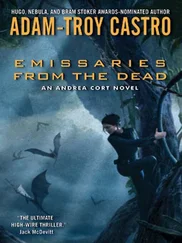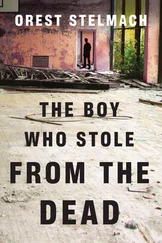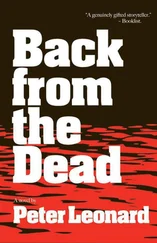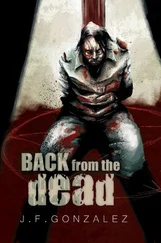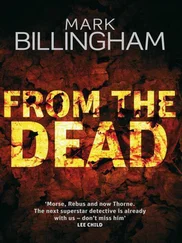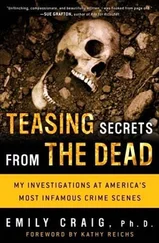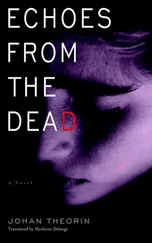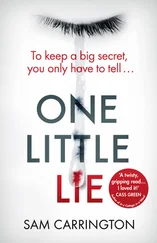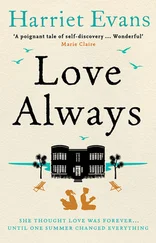Then I began to discern the pattern that was gradually emerging in the skull fragments, and suddenly my discomfort vanished. Even at this early stage, I could see that these fractures were caused by something other than the fire, just as Dr. Harvey had suggested. But because of my anthropological training, I was able to see something in the bones that I recognized, though I could hardly believe my eyes. There was only one explanation for the way this woman's skull had shattered-but nothing I had heard in any of the news coverage or at this morning's briefing supported what I thought I saw.
My first impulse was to run over to Dr. Harvey and share my suspicions with him. But common sense and a sense of self-preservation prevailed. I'd had one too many run-ins with grad-school professors who'd taken me to task for “theorizing ahead of the facts.” No, I'd gather every scrap of evidence I could before presenting Dr. Harvey with what I intuitively knew to be the truth.
So I removed the last morsel of goo from the skull bones before starting to dry each one with a paper towel. I knew that the next step was to glue the skull pieces together-that way, we could see the skull as it had been in life, and what I had discovered would be fully revealed. But the edges of the bones had to be entirely dry before the glue would stick and they were still soaking wet from their bath. I looked at them impatiently-maybe if I toweled them off?
One of the autopsy technicians must have seen me clumsily rubbing a few scraps of paper towel over the bones, because she suddenly tapped me on the shoulder. I turned around to see that she was holding a hair dryer in her gloved hand. She, too, was wearing a protective surgical mask, but I could tell by the crinkle at the corners of her eyes that she was smiling broadly underneath. I'm sure my eyes crinkled too as I smiled and took the dryer. In just a few minutes, I started gluing my bones back together.
Here is where Bill Bass's relentless pursuit of perfection paid off. Any other teacher might have allowed me to leave his class unsure of how to identify and reposition tiny random fragments. But thanks to Dr. Bass's insistence on detail, I could read the subtle variations in the contour of the bone and discern the delicate three-dimensional pattern of veins imprinted on some inside surfaces of the skull-clues that showed me at a glance which bones went where. As I had already done in my Tennessee murder cases, I started to glue the broken pieces together, edge to edge, just the way you'd piece together a broken vase.
Before too long the original shape of the woman's skull emerged: first her forehead, then her eye sockets, then the holes for the hearing mechanism and spinal cord. And then, as I placed two large matching pieces together, I saw exactly what I had expected to see, the evidence that I was longing to share with Dr. Harvey: a neat round hole with beveled edges in a place where the bone should have been smooth and solid. The hole's outside edge was surrounded by a ring by of black soot, also a significant clue. Dr. Harvey's first guess had been right. Neither the fire nor the falling walls had shattered this woman's skull. She died because someone had held a gun up to her head and pulled the trigger.
The black soot told me how close the gun had been. You only get that sort of “gunpowder tattoo” when the gun's muzzle is close to the victim's head. I could see where the bullet had pierced the skull, too, breaking out a plug of bone as it forced its way through the skull's three primary layers-the smooth outer ectocranium, the inner endocranium, and the spongy bone sandwiched in between. As usually happens with entrance gunshot wounds to the skull, the entire three-layer bone plug had broken away at a slight angle, leaving a cone-shaped hole, sort of like the round window of a jet airplane, with the inside circumference of the hole larger than the outside edge.
Sometimes a bullet will also create an exit wound. That too leaves a beveled hole, but in the opposite direction, with the outside edge larger than the hole inside the skull. I didn't see that here, which meant that, theoretically, the bullet was still lodged in the woman's brain. But I hadn't found any trace of it, though I'd just squished through every square inch of brain matter, feeling for bone fragments. Was there a bullet or wasn't there?
I took a closer look at the skull. I could see that it was missing several fragments, probably pieces that the shot had blown away. Most likely, the exit wound was marked out on one of these missing pieces.
Now it was time to approach Dr. Harvey and ask him to examine my rebuilt skull. When I tentatively approached him, he stepped away from his own case without a word, businesslike but exhausted. I offered up the skull in its plastic pan like some weird project for art class, and he lifted the skull gently with both hands, slowly turning it around.
I heard his short, sharp intake of breath. The next thing I knew, he was dashing out of the room, taking the skull with him.
Standing there, still holding the blue pan in front of me, I glanced over to the team at the next autopsy station. They had just opened a body bag that contained hundreds of broken and burned bone fragments.
“You're an anthropologist, aren't you?” asked a male voice from behind one of the anonymous masks. I nodded and walked over to their gurney. “We could use you here,” said the same muffled voice. And that's how it started. Two weeks of seemingly endless hopscotch in which I moved from task to task, helping out wherever I could.
Sometimes I would arrange groups of bones in anatomical order, separating the burned and fragmented tibias, fibulas, scapulas, hoping that a count of similar bones-two right femurs, for example-would help me determine just how many people's parts were in that pile. Or I might be asked to dissect someone's pelvic bones, examining the joints in a quest to determine the person's age. Most of the time, though, I was cleaning up skull fragments and gluing them back together, just as I'd done on that first case. Little did I know that the gunshot wound I'd found had been just the tip of the iceberg.
Besides the regular seven-thirty a.m. briefing, we also attended five p.m. sessions, when the medical personnel and FBI investigators gathered to share our findings for the day. On this first day, I was exhausted and happy to shed my protective gear, which by now was covered with a dense pattern of blood splotches, charcoal smears, some goo that was better left unidentified, and my own sweat. And I hadn't seen Bill and Theresa since Dr. Harvey had taken my arm that morning. I was anxious to compare notes, so I got back into my street clothes as quickly as possible and headed down the hall to join my friends. We barely had time to exchange greetings, though, before it was time to pour into the conference room. We three novices slipped into chairs against the back wall, just as the pathologists and federal agents took their seats around the conference table in the room's center.
As always, Dr. Peerwani opened the meeting, beginning today with a mundane list of the day's case numbers and a rundown of some positive IDs. He relayed a progress report from the scene and thanked everybody for the day's efforts. Then he yielded the floor to Dr. Harvey.
“I have some startling news to report,” Dr. Harvey began. Bill, Theresa, and I leaned forward, wondering what he was about to say. “It concerns a woman found at the scene. Although her remains were burned, she didn't die from the fire. She died from a contact gunshot wound to the head.”
Oh, my God, I thought. That's our victim, the one whose gunshot wound I found.
No one uttered a sound. They just looked at one another, some folks nodding their heads, others raising their hands to massage their aching temples. Still others had already begun furiously scribbling in their notebooks and, behind me, someone started tapping the keyboard of a laptop computer.
Читать дальше

